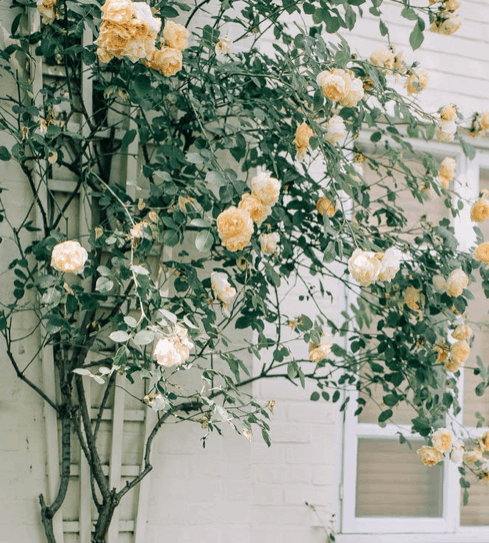Rose bushes are very nice, especially when they are blooming and looking healthy. Rose bushes can adapt easily to the Southern California weather because they love the summer climate and the winter climate is not too cold. According to FTD.com there are over 150 different varieties of roses. With the right energy, time, and dedication, anyone can grow and make a lovely rose bush bloom in their garden. All you need is a bit of guidance and you are good to go. This article will teach you about proper rose care including pruning, maintenance, pest control, and disease prevention.

Looking at people thinning their rose bush might make it look like a daunting task, but don’t be intimidated! Even the most inexperienced gardener can get it right.
Requirements for pruning your roses
- Gloves: A strong gauntlet-style glove set that reach up to your elbows. This will keep you protected from the thorns and prickles.
- Appropriate Clothing: You will need long sleeves.
- Shears: Rose pruning requires Bypass shears, not Anvil shears. Bypass shears will make a clean cut straight off, unlike anvils that crush stems.
- Pruning Sealer: A chemical compound for sealing freshly cut spots.
- Other: Maybe a cup of water or lemonade, a plate of cookies, your radio or iPod, all to keep you company as you work.
Pruning during the seasons
- Winter: The pruning done in this season is to prepare the plants for Spring. You will have to trim the stems, uncross the branches, prune heavy bushes, and leave just enough leaves.
- Spring/Summer/Fall: Pruning done during these seasons is meant for cutting off the dead blooms, leaves, and dried stems.
How to prune
- Start Manually: You don’t need your shears for this, just your hands. Pick off the outer leaves that are obstructing the full view, and pick off any pest attached to the flowers, leaves, and stems.
- Proceed to the Dead Foliage: Brown is dead, green is alive. Pick up your shears and snap off all dead stems.
- Uncross All Branches: Separate the crossing branches and make each one stand on its own because rubbing causes damage and disease transfer. Let your rose bush have upward branches with a vase-like appearance.
- Prune the Weak: Unfortunately, the weak and diseased will only bring the others down, so cut them off.
- Prune the Bumps: Prune the leaves and stems that are obstructing the growth of a new one. For this step, you have to be particularly observant so that you don’t prune the wrong plants.
- Cleaning: Clean your surroundings after pruning, and don’t leave anything behind. Don’t forget to clean your shears and gloves also, so you won’t infect the bushes next time.
Rose bush maintenance
Watering: The Southern California climate tends to be hot most of the time. Yes, roses need sun – a lot of it – but they can also dry out if they don’t have enough moisture. So, soak the root zone of your bushes in water twice a week, making sure they reach deep inside. Reduce it to once a week in the fall.
Mulching and Shading: If you notice that your roses keep looking dry no matter how much you water them, you will need to practice mulching and shading. Mulching will protect the soil around the roots from losing too much water, while shading will protect the bushes themselves from losing water.
Feeding: Roses need a lot of Nitrogen and other macronutrients. So, get natural fertilizers and composts to encourage your rose blooms. To make the perfect compost, always add banana peels; they’re a source of nitrogen and phosphates. Feeding should be done once a month from April to July.
Pest Control and Prevention
- Avoid the use of liquid artificial fertilizers because they attract aphids, locusts, and beetles. Plant scented plants like lavender near each rose bush because it discourages herbivores like Deer and goats.
- Spray your bushes with pesticides to kill mites, stem borers, and pollen suckers.
- Clean up fallen leaves and avoid debris collection around your plants; these things attract the pests in the first place.
Disease Control and Prevention
- Always prune the diseased canes and leaves on time before they affect others.
- During the rainy season, coat the leaves with a fungicide to prevent black spots.
- During the wet and chilly seasons, create spacing between the leaves to discourage mildew growth.
- Cover your compost with soil because it can also breed diseases.
Roses are beautiful, there’s no denying it, but every beauty demands the right amount of attention. When you give this to your plants, you are ready for a bed of fragrant posies. All the hard work will be worth it when you see the first bloom of your roses each year; they’re an amazing sight to behold.
Feel feel to contact our support team if you have questions about your garden at Contact Us.





